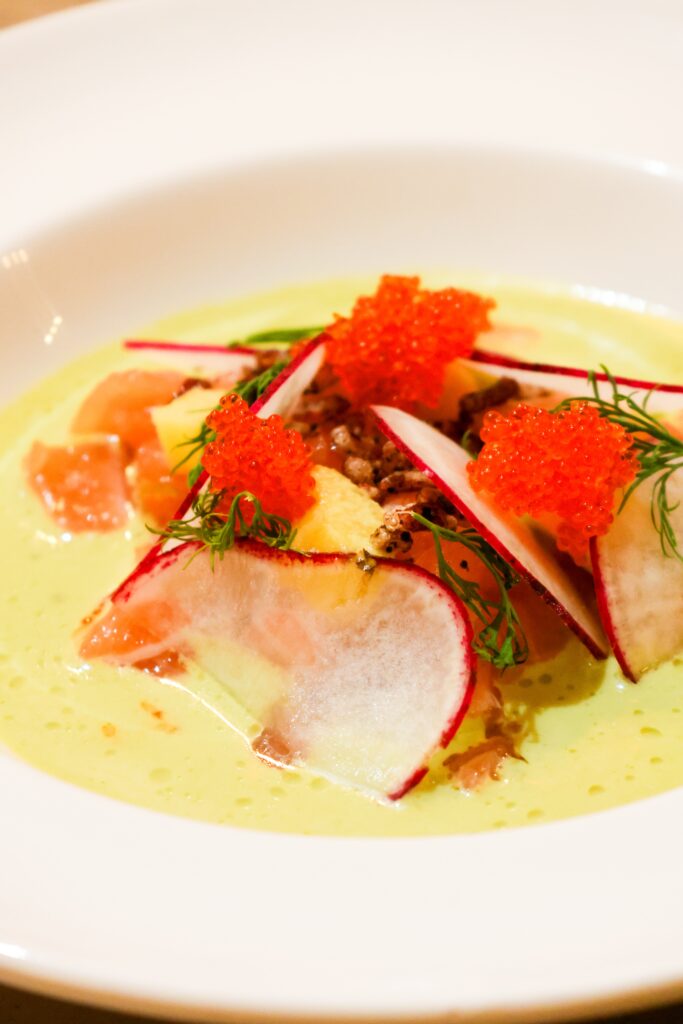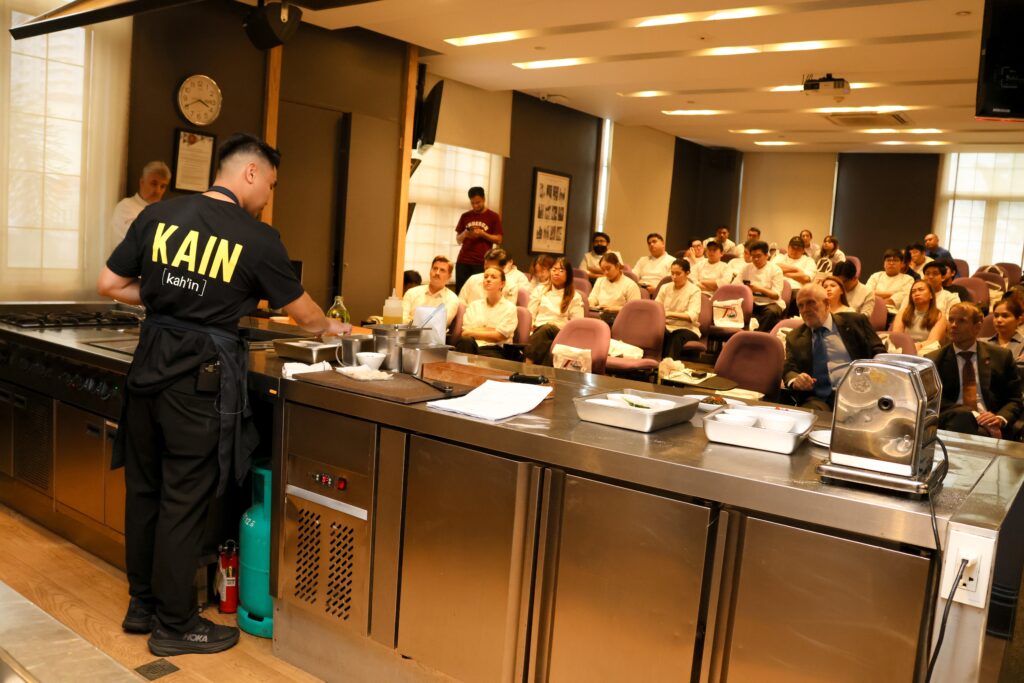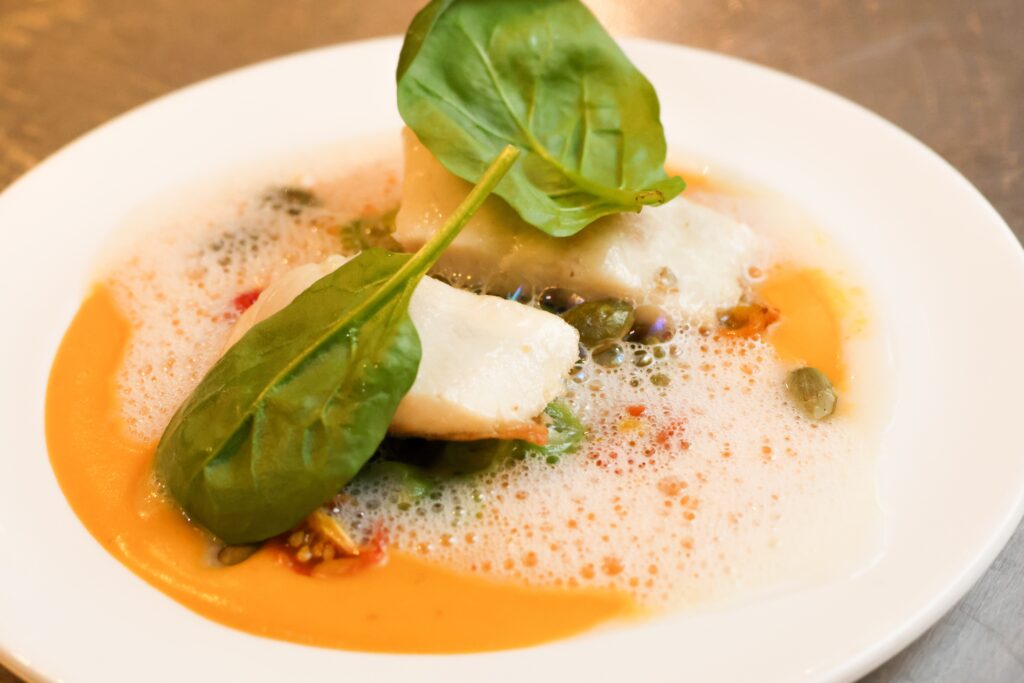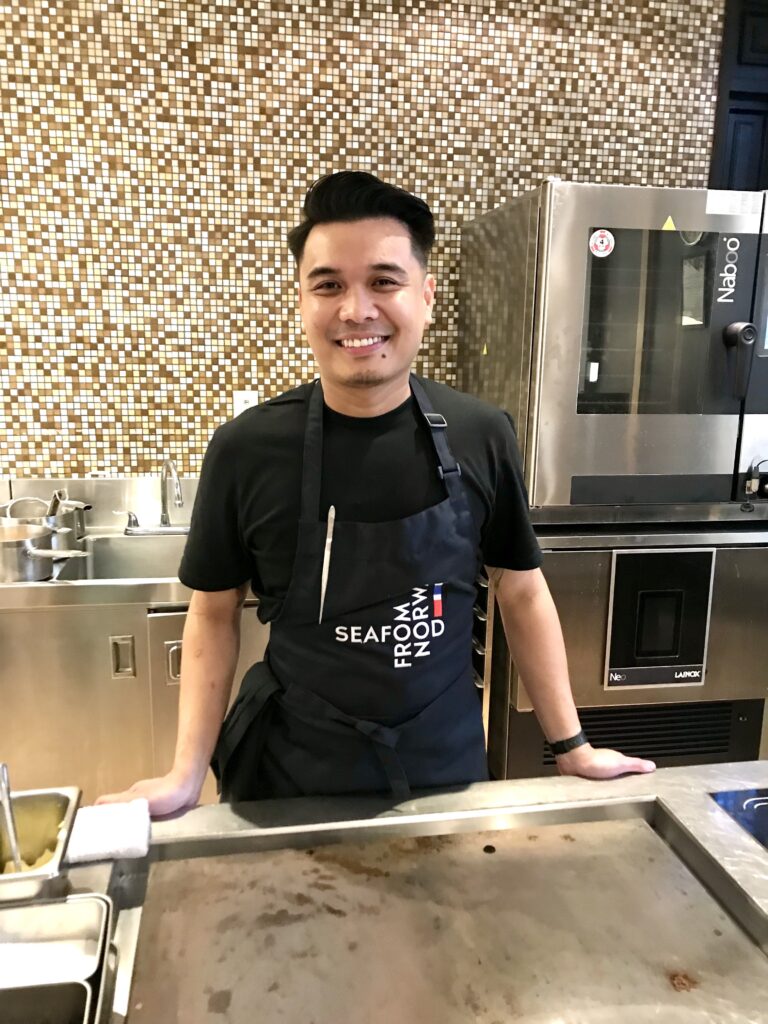Dominic Dane Vergara was only 12 years old when he and his family from Pampanga migrated to Italy. For many years, his parents ran a Filipino restaurant called Cabalen Ini in Milan. Both Dominic and his younger brother Daniel helped in the daily operation till the restaurant finally closed down.
Because of his early exposure in the kitchen, Dominic pursued culinary arts in Milan and later on apprenticed and worked in restaurants with Michelin star recognitions. To name some, Emporio Armani Caffe with chef Luca Seveso, Nobu Milan, Ristorante Vecchia Malcesine, Ristorante Berton and Ristorante Innocenti Evasioni.
Dominic also apprenticed in Oslo, Norway and eventually worked at Maaemo, the only three-star Michelin in the country.
Dominic, now 35 years old, has since relocated to Oslo and has been living in the country for more than five years.
In 2019, Dominic and Daniel had an opportunity to showcase Filipino dishes by opening a food stall at the trendy Oslo Street Food market, where they showcased Pinoy favorites like adobo, sisig, tapsilog, etc. The stall, called Kain Filipino Rice Bar, became an instant hit among the Oslo locals. Soon after, the brothers — with three other partners — opened Kain Neo-Filipino Bistro, a full-service restaurant that combines New Nordic Cuisine (Scandinavian food) with modern Filipino recipes. Again, it was an instant hit and it has become one of the must-visit food destinations in Oslo.


“At Kain, we serve authentic Filipino flavors using the local ingredients,” said Dominic, who was recently in Manila to give a special masterclass for students at Enderun School of Culinary Arts in BGC, Taguig City. “Norway has the best seafood in the world, such as salmon, scallops, trout, langoustines, cod and crabs, and not so many people know about it.”
Yes, Norway produces some of the world’s best and freshest seafood that is served at the world’s top restaurants. The cold, clear waters surrounding Norway boast abundant populations of fish and mussels and other shellfish.
However, what diners prefer to eat at Kain — whose customers consist of 85 percent Filipinos — are non-seafood dishes, such as the Kapampangan sisig.
“They go crazy over our pork sisig that’s served on a sizzling plate with tortilla on the side,” shared Dominic, adding that “the meat is wrapped in tortilla. It’s eaten like tacos. Norwegians love tacos. They are not big rice eaters unlike us Filipinos.”
Another bestseller is the
chicken–pork adobo, slow-cooked pork belly and chicken with ramen egg and served with crispy chicken skin on the side.
The bistek tagalog is prepared with a thick cut of hanger steak (or butcher’s steak) and garnished with different textures of onions, such as caramelized, crispy, raw and charred.
“I am showcasing the Filipino food because I want to go back to my roots. We need to be proud of our heritage,” Dominic said.
Masterclass
Dominic was recently in town to inspire next generations of Filipino chefs through a special demo for Enderun culinary arts students.
The visit was made possible by the Royal Norwegian Embassy in Manila, which is currently celebrating 75 years of bilateral relations with the Philippines.
“And what better way to acknowledge this partnership than to celebrate it with good food. That’s why we brought in chef Dominic of Kain from Oslo to represent both countries,” said Norwegian Ambassador Christian Halaas Lyster.
He added: “Kain means to eat but, to us, it also means connection or connecting with beautiful people from two different countries.”
The ambassador also disclosed that Norway is one of the biggest importers of seafood, specifically salmon and mackerel, to the Philippines.


Dominic’s masterclass at Enderun featured three modern Filipino dishes using the Norwegian seafood — Salmon Kinilaw, prepared with brown rice, nori, radish, fermented mango (or burong mangga) and jalapeno dressing; Palabok Negra, served with Norwegian salmon roe and smoked mackerel; and Ginataan Kalabasa, a mixture of pumpkin puree, green beans and coconut milk, topped with Norwegian trout.
Salmon Kinilaw For salmon:
160 g Norwegian salmon fillet
10 g brown sugar
10 g fine salt
For dressing/seasoning salmon:
5 g chives and olive oil
5 g lime zest/salt
Fillet the salmon and take the skin off. Marinate with the mixture of salt and sugar for 10-15 mins, rinse in cold water and dry. Cut into desired size, season before serving.
For Crispy Brown Rice:
20 g brown rice
1 sheet noir seaweed
Frying oil/salt
Blitz nori sheets to powder. Cook the rice in abundant boiling water until it’s soft (almost overcooked). Strain and rinse in cold water. Strain well and spread in trays. Dry in the oven or dehydrator 80oC for six hours. Fry the dried rice at 200oC, then season with nori powder and salt.
For Jalapeno dressing:
100 g fresh Jalapeno (deseeded)
150 g grapeseed oil
75 g sushi vinegar
33.5 g water
16.5 g fresh coriander leaves
16.5 fresh garlic (peeled)
12 g lime juice
Blanch jalapeno for three to four times. Put all the ingredients in a blender and blitz until smooth. Strain with a fine mesh.
For sushi vinegar:
5 g rice vinegar
3.1 g white sugar
10 g salt
7.5 g mirin
1 pc small kombu
Mix all the ingredients until salt and sugar dissolved.
To assemble: Arrange rice on a platter, top with salmon and cover with jalapeno dressing. Garnish with fresh dill and thinly sliced red radish.
Palabok Negra
For squid ink pasta:
100 g flour
25 g fine semolina
1 pc whole eggs
2 pcs egg yolk
1 tbsp squid ink
Put all ingredients in a mixer and make a homogenous dough (knead with hands. if needed). Vacuum and rest in the fridge for one hour. Roll the dough and make tagliolini.
For palabok sauce:
60 g minced pork
40 g prawn shell fresh
8 g garlic
24 g onion
1 pc bay leaf
200 g water
6 g miso
2.5 g fish sauce
1 g sugar
Salt/pepper
Cornstarch
Sear the meat until golden brown then set aside. In a pressure cooker, saute garlic and onion until translucent. Add all the ingredients and cook for one hour. Strain and reduce the broth to the desired consistency. Thicken with corn starch.
For smoked mackerel:
100 g Norwegian smoked mackerel
Cut the smoked mackerel into small pieces and put in trays. Dry in the oven at 85oC for 10 hours. Once dried, blitz into powder.
For salmon roe:
20 g salmon roe
Use it in its natural form.
To assemble: Arrange pasta on a platter, pour in the palabok sauce and top with smoked mackerel and salmon roe. Garnish with butter, chives, fresh lemons, black pepper and pork chicharon.
